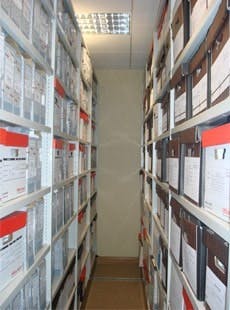Twin goals of improved efficiency and compliance are driving more life sciences companies to implement manufacturing execution systems (MES). MES software bridges the gap between traditional plant floor automation systems and business applications such as Enterprise Resource Planning (ERP). It provides a digital link that eliminates the errors and information latency of manual, paper-based interfaces, providing a real-time picture of what is happening on the plant floor.
However, MES installations are challenging, and a flawed implementation strategy will prevent MES from achieving its full potential return on investment (ROI). It is especially important to look carefully at underlying work processes to determine where the inefficiencies lie, or you will merely transfer these inefficiencies from a paper to an electronic medium. Thus, MES implementation is actually an opportunity to examine processes and how they can be improved. This article will summarize some best practices that can help optimize MES implementation for pharmaceutical manufacturing.
The first point to consider is cost. MES implementation can cost a plant anywhere from $1-10 million, depending on the facility’s size and scope. But most of this figure will pay for implementation resources and activities such as configuration, documentation and validation, rather than software or hardware. Thus it is vital that any implementation strategy be well thought-out.
Since the system will affect many different departments in a drug manufacturing plant, a multifunctional approach is essential for any MES implementation. Success also requires that people working at the facility understand the manufacturing process, as well as the issues that currently impede efficiency or compliance.
Once problems have been identified, one can match them with available MES functionalities. Most MES systems are modular, with each module focusing on a given function, such as finite scheduling, dispensing, Electronic Batch Records (EBR), equipment management, performance monitoring or recipe management. Modules include interfaces to ERP, document management, laboratory information and plant-floor automation systems.
Plant Makeup and Issues Should Guide Implementation
Issues at the facility will determine which functional modules to focus on first. For example, a facility that manufactures high volumes of products using straightforward processes would want to focus on EBR first, since it could reduce the number of deviations and incorrect entries and shorten batch review and approval times through review by exception. In contrast, a complex multi-product plant would likely realize greater productivity gains by focusing on finite scheduling or equipment management modules.
Once an MES project has been initiated, it is critical to match the facility’s requirements to the software’s functional capabilities. Many of the current MES systems allow very sophisticated configuration using standard, off-the-shelf software.
Since customization inevitably increases the risk of something going wrong, standard software features should be used as much as possible in the MES configuration. In general, customization should be used only when there is an extremely convincing business case for it, since it will take up software development and validation time, and can lead to problems later on, when it’s time to upgrade to a more recent version of the software.
Avoid Paper on Glass
Consider why you want the customization in the first place. Are you merely trying to duplicate the current paper-based process in an electronic environment? The software functionality may meet the same goals, yet use a very different approach.
Furthermore, when moving from a paper-based manufacturing system to an electronic one, it is critical not to map, blindly, from one medium to the other. There may be inherent inefficiencies in the process that will show up, whether you use a paper or an electronic system. Thus, an MES implementation offers an opportunity for process improvement and optimization.
If the MES implementation is part of a global corporate rollout, many of the functional requirements will be identical for a number of plants. In such cases, adopting one core solution will result in benefits of scale. This is particularly true for validation documentation. The core functionality can be documented and validated for all sites by a corporate team, so that individual sites are only responsible for their own local configurations.
Taking this approach can drastically reduce the time, cost and resources required for validation. Not only will the benefits be related to the MES functionality of the particular package used, but it is also highly likely that the interfaces to other systems (e.g. ERP systems) will be the same across sites. Furthermore, if any customizations are required, they can be bundled into a core package, enabling greater control to be maintained and allowing more leverage for the client to obtain vendor support for these through system upgrades.
Interfaces to external systems can be perceived as high-risk, due to the variety of applications and technologies that exist. However, this challenge must be addressed if the installation is to provide the desired flow of data between plant floor and business. While vendors may have some standard interfaces—to leading ERP vendors, for example — some interfaces will inevitably need development or customization.
To reduce both short- and long-term risk, interfaces should be kept as simple as possible, and the amount of data transferred between them should be kept to a minimum. When using interfaces, even standard ones, follow the methodology laid down by industry standards. The ISA-95 Standard Enterprise - Control System Integration [1] provides a framework within which a system in an integrated solution should perform certain functionality, together with the key data exchange that should occur between interfaces.
The Devil’s in the Details
Apart from the functionality and software systems that are used in an MES implementation, consideration should also be given to the infrastructure required. For instance, on what terminals are the end-users going to perform their tasks? Do such terminals exist? What is the existing network availability? Is there an existing dedicated manufacturing or automation network?
Many MES vendors now support the use of wireless devices such as tablet PCs or PDAs to run their applications, and this can be highly beneficial when end-users are in an environment where mobility is required, as is the case with mobile equipment. Through the use of such devices, operators can have the mobility and flexibility of a paper-based system while benefitting from MES functionality.
While these issues may seem relatively trivial to deal with at first, they can prove to be major stumbling blocks if not properly thought through. If manufacturing activities are performed in a clean or sterile environment, then the impact of adding more network coverage, such as cabling and network points, can cause major disruption to operations. Furthermore, the cost of placing industrial-rated PCs and appropriate enclosures required for real manufacturing environments must also be considered. Finally, if the MES is a fully integrated system with interfaces to automation and business systems, the whole architecture must be carefully considered, from both a performance and security perspective.
Traditionally, automation systems have largely been stand-alone, either in the form of a Programmable Logic Controller (PLC) and Supervisor Control And Data Acquisition (SCADA) package, or a Distributed Control System (DCS) system with little or no connectivity to external systems. Consequently, performance or security issues have not arisen in the past. With an MES system, however, there is connectivity from control devices to the Internet, so security is an important consideration.
The situation is compounded further by the fact that it is much more difficult to patch “validated” control systems. In some cases, automation vendors specifically prohibit the use of anti-virus software on their systems.
As with the interfaces, industry standards and best practices are starting to emerge, such as the ISA S99 Manufacturing and Control Systems Security Standard [2]. Such standards address the connectivity required for data flow between systems, while at the same time providing sufficient security safeguards around automation systems and these should be factored into an implementation strategy.
Phased in vs. Big Bang?
If multiple MES modules are being implemented, the question arises as to whether or not to adopt a gradual, phased approach versus a ‘big bang’ implementation. A phased approach allows one to use fewer project resources over a longer period of time. This can be an important consideration if experienced, cross-functional resources are hard to come by.
Furthermore, a phased approach may shorten the time to benefit for key modules. Other aspects of phased approaches may be to deploy the MES solution on one line or train, and then, once it is running successfully, to roll it out to the remainder of the plant. This approach has the benefit of reducing risk to the entire manufacturing facility, should any unforeseen problems arise.
However, with a phased approach, one must be careful to take into account the impact and compatibility with future modules and functionality. The phased approach is probably best in an existing plant where consideration must be given to current operations in terms of resource availability and impact on production.
On the other hand, a “big bang” approach can provide all the benefits in a single “go live.” While this approach will take more time and resources before any benefits from MES can be realized, it may be suitable for a new green-field site, where “impacts to current manufacturing processes” would not exist.
User Training
Finally, user training is one critical aspect of a successful MES implementation that is often overlooked. Not only must users be trained in the technical aspects of the system, they must also be made fully aware of the implications of any of their actions. For example, signing for batch records, in accordance with 21 CFR Part 11, takes on added importance in a non-paper environment [3].
Although training may seem a trivial task, scheduling it so that all operators are fully trained before the MES system “goes live” in a working plant requires careful planning. And it is every bit as vital to a successful MES rollout as the technical aspects of the particular system being installed.
References
1. ISA-95 Standard Enterprise - Control System Integration.
2. ISA-99 Manufacturing and Control Systems Security.
3. Title 21 Code of Federal Regulations (21 CFR Part 11) Electronic Records, Signatures
About the Author
Paul Murray is the IT/MES Team Leader for ProsCon, Ltd., a process control engineering company based in Cork, Ireland. ProsCon offers a range of services to customers in the drug, chemical and other industries, from process design to validation and modular design and build. Mr. Murray has more than 10 years of experience implementing automation, LIMS and MES within the pharmaceutical industry. He holds a Ph.D. in Physics from the University of Liverpool, U.K.


